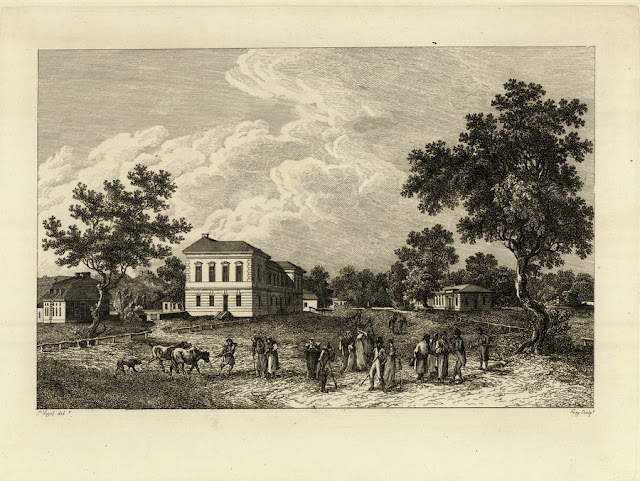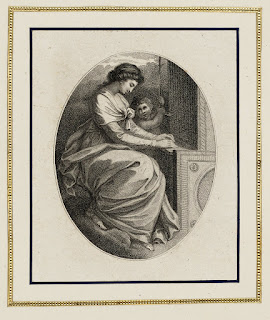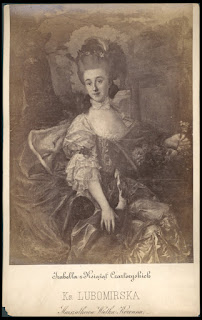|
photograph of a |
||
|
Contrary to popular belief, the past was not a time when hygiene was not taken care of. On the contrary. We know of Izabella Lubomirska, née Czartoryska, that she valued bathing in grape marc, and was advised to give her residents, including Marcello di Capua, a valuable object such as a bathtub. She herself also had such a bathtub already in her Warsaw residences.
Izabella Lubomirska is also indebted to Poland's first spa complex in Krzeszowice near Krakow, where, as she promised the settlers, "everyone will be allowed to bring water from the mineral springs to themselves proportionally through pipes and set up bathrooms."
And already a year later, in 1784, Krzeszowice was famous, and despite the unfinished work in the summer, numerous company including the Princess Marshal, her daughters and their friends came there. The spa was no different from resorts throughout Europe, it was furnished fashionably, elegantly, comfortably and conveniently. It was modern and at the same time museum-like. Just like similar places familiar to us and in the 20th century.
 |
| Vue de Krzeszowice/View of Krzeszowice etching, ca.1806 by Zygmunt Vogel (1764-1826) source: polona.pl |
Lubomirska in Łańcut, only in the Castle did she have two baths. This is because she ordered two bathrooms to be furnished. Both were located on the first floor, one by the Turkish Suite and the other by the Brenn Suite. In these rooms one could not only take a bath in the copper tubs, but also relax and cultivate one's beauty at the elegant cooking facilities.
Two additional bathrooms were built in the castle gardens, one in 1805 near the palace, on the eastern bastion. There, a copper bathtub decorated with bronze and a mirror stood in the bathing room. The second bathroom was erected on an island in Zwierzyniec (the garden at the foot of the city), but there it presumably served as a gazebo from the beginning. The bathroom by the palace was also turned into a gazebo over time, and was eventually demolished in the late 19th century.
The grandson of Izabella Lubomirska and her successor in Lancut, Alfred I Potocki was fascinated by technical innovations and used innovative solutions. The first half of the 19th century was a period in which balneology was widely popularized, as evidenced by publications by Mosing and Marczewski, among others, published during this period of time. The Potockis were eager to indulge in therapeutic baths, and Countess Józefa of the Czartoryski family saw in them the hope of improving their health.
 |
| grafika z Tableaux, William Hamilton (1751-1801) źródło:polona.pl |
Among other things, she used baths in milk, herbal infusions and grain malt. Bathing in grain malt, like bathing in bran, had a hygienic and soothing effect on inflammatory diseases and "nervous system ailments." Doctors recommended them especially for delicate and nervous women. Milk baths, known since ancient times, were recommended after serious illnesses in children and women, for example, to calm the nerves. Typically, 20 quarts of milk were added to warm water and, as with bran or malt baths, moderate temperatures were recommended to tone tensions. Milk baths were also taken by the young Potockis. Józefina Potocka also bathed in water with the addition of herbal decoctions of strong herbs, including poisonous ones. This type of treatment was used for illnesses in which the pain was difficult to bear. Such a bath was supposed to calm the nerves, bring sleep and relieve pain. The countess also used "sitting" baths.
Count Alfred Potocki acquired for himself, among other things, a tub for dry baths and a tub for steam baths. Dry baths were called steam baths, strongly promoted in the first half of the 19th century. At this time, too, publications appear that even point to the healing power of such treatments.
Such attention to hygiene was not common at the beginning of the 19th century. Bathrooms were also often side rooms in palaces. Bathtubs were easy to move, were made of wooden staves and were more like large tubs. In time, copper and tin baths, known much earlier in Łańcut, came into use. And at that time, new technical solutions were already being thought of in the Łańcut castle. ecl
We used, among others, Bożena Majewska-Maszkowska, Artistic patronage of Izabella Lubomirska née Czartoryska 1736-1816, 1976
Maria Nitkiewicz, Łańcut under partition period one (1772-1867), Łańcut 1996

